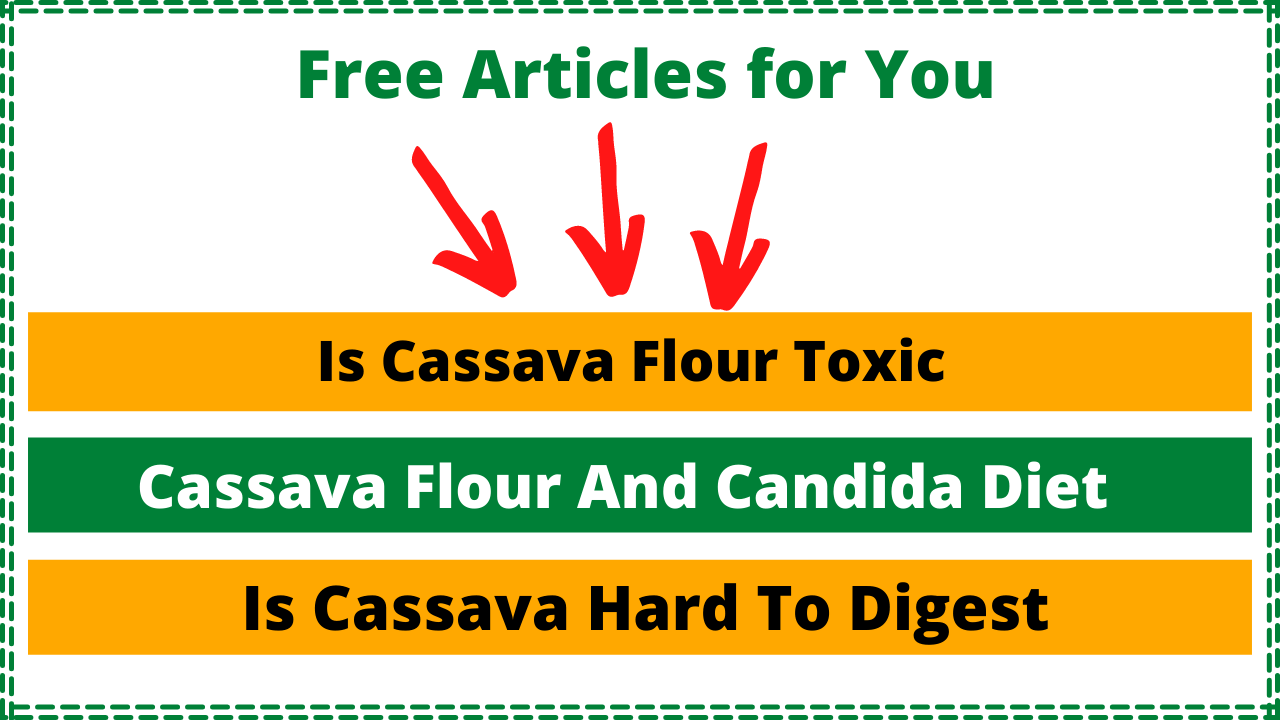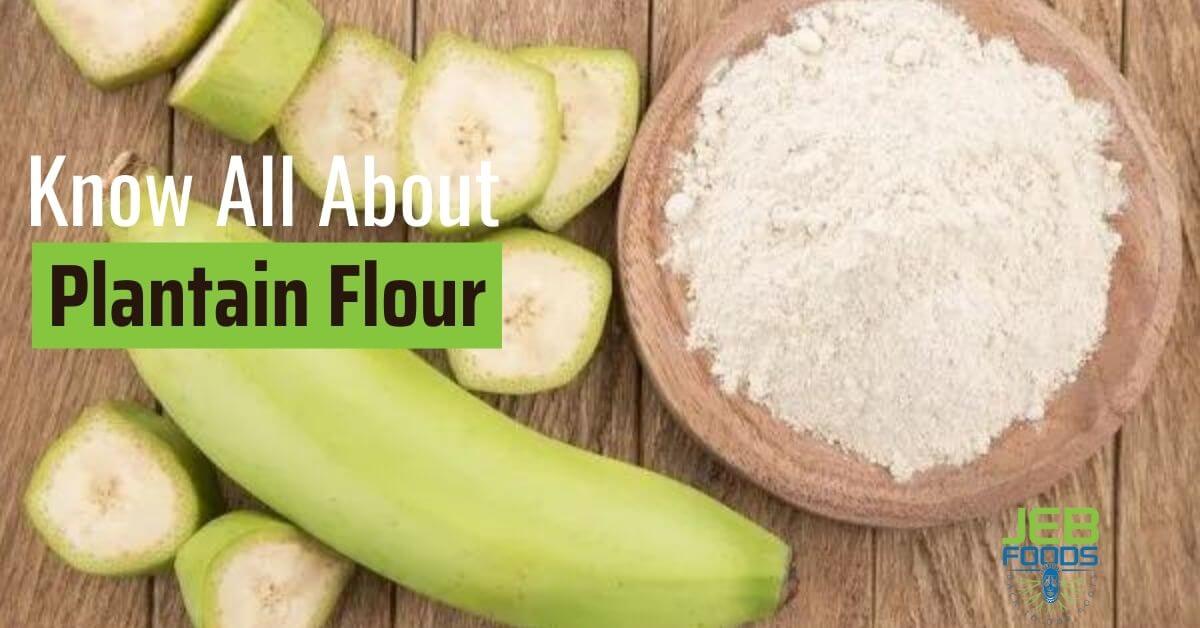Chickpea flour and cassava flour are not the same although they are both gluten free flour but are massively different, in physical appearance and quality.
Chickpeas flour comes from finely ground dried chickpeas. It’s gluten-free and nut-free, and it’s high in folate (vital for cardiovascular health), fiber (for gut health), and B vitamins (necessary for a healthy metabolism).
It has an intense, earthier, and nuttier flavor than other flours used in sweet and savory dishes. It’s delicious in falafel or corn muffins, and it is used in making socca, also known as chickpea flatbread, with just water and spices.
Cassava is also known as yucca, a popular underground root vegetable originating from South America. The flour is created by grating and drying the entire root. It’s a gluten- and nut-free option that’s also inexpensive and versatile, similar to chickpea flour.
Cassava flour is a healthy option because it has fewer calories than most flour. It’s also high in vitamin C, which acts as an antioxidant to help relieve stress, boosts your immunity, and improve your skin’s health. It has a mild flavor and can thicken sauces, make bread, or make tortillas.
Cassava Flour Vs. Chickpea Flour
Table of Contents
ToggleGarbanzo beans, also called chickpeas, are high in protein and fiber and are a good source of iron. It is useful in making falafel, hummus, socca, farinata, papadums, and pakoras, as well as other foods. It’s also great for making gluten-free baking.
Some people call it chickpea powder, used in Middle Eastern and Indian cuisines. You can try it in crackers, pizza crusts, and bread and enjoy the rich flavor.
You can use chickpeas flour in cakes or quick bread with intense flavors like chocolate and pumpkin. If you want to thicken soups, sauces, or gravies with it, you can also use it.
For mixed flour, use 25% chickpea flour as a replacement in your baking; this will help you get more protein and fiber in your food.
People in many parts of Africa, Asia, and South America eat a lot of cassava, a starchy root vegetable.
All cassava leaves are edible, and people ferment the juice to make syrup, a drink called kasiri. You peel, grind, ferment and roast or dry the cassava root to make flour.
Some wheat flour contains 35% cassava flour in the West. As a result, many people who can’t eat gluten will be pleased about this. People who follow strict diets like the Paleo diet and the Whole30 will also be happy.
When comparing cassava flour to all-purpose white flour, it is stripped of fiber, protein, vitamins, and minerals during refining, so it doesn’t have as many nutrients as whole wheat flour.
People who use cassava flour get more protein and fiber than people who use white flour, according to the USDA’s National Nutrient Database.
The amount of vitamins and minerals in white flour doesn’t matter as much as whether or not it has been enriched or has had synthetic vitamins added to it.
It doesn’t do as well as wheat flour and other common gluten-free flours, like almond, brown rice, and chickpea flour. It doesn’t have any protein, but whole wheat, brown rice, and chickpea flours have between 7 and 22 grams per 100 grams of flour, which is a lot. Cassava does not.
Cassava flour has more fiber than rice flour, but not as much as whole wheat or chickpea flour, which both have a lot of fiber. If you want to get more vitamins and minerals, you should use enriched white flour, whole wheat flour, chickpea, and brown rice flour, as well as cassava flour, to make your food.
Also, I compared cassava flour vs Hazelnut flour here. Check it out to see the best option for baking

What Are The Best Chickpea Flour Substitutes
Among Quinola Flour, Oat Flour, Almond Flour, Millet Flour, and Cassava Flour as ideal flour substitutes, Quinola Flour, Almond Flour, and Oat Flour are the best substitutes for chickpea flour.
Their consistency and use support flour mix with chickpea flour or total substitution with chickpea flour. It works in various recipes but excels in tortillas, crepes, and flatbreads.
When cooking with chickpea flour, replace heavier flours almond flour and quinoa flour with a 1:1 ratio, or add a few tablespoons to recipes that require extra stability.
It is also highly absorbent and produces a sticky texture, so be mindful of how much moisture you use in your recipes.
Cassava flour
Cassava flour is an excellent option for a milder flavor or texture. Because it is gluten-free, it is a superb chickpea flour substitute. It aids in the growth of beneficial gut bacteria, which improves colon health.
It is not gritty, It is very nutritious, and it can substitute wheat flour. If you want to make bread, combine cassava flour with other flour because it does not rise on its own.
Cassava flour is high in carbohydrates, so moderation is key. It works well in recipes as a thickener.
The high fiber content supports weight loss, giving you satiety.
Quinoa flour
Quinoa is high in calcium, which helps bones and teeth, and iron helps red blood cells. Hemp contains all of the amino acids your body needs to stay alert.
The high fiber content (20 grams per cup) helps lose weight. It keeps you feeling full faster and longer because feeling full prevents overeating.
Quinoa flour is expensive, but it is easy to make at home with a blender or grinding device. Place raw seeds in a hot pan and toast until golden brown and popping.
Quinoa is a good chickpea flour substitute in a 1:1 ratio. Quinoa flour is a good combination of flour-mix with chickpea flour, among other healthier flour, to create great texture.
It binds different ingredients and is gluten-free, so there’s less chance of stomach upset.
Oat flour
Oat flour is a simple substitute for chickpea flour, and you can make it at home. Mill repeatedly the oatmeal in a food processor or blender for about 15 seconds or until it is a fine powder.
Oat flour is high in fiber and nutrients. It’s a good carbohydrate easy on your blood sugar and gut. This flour is ideal for recipes that require a denser texture or mild, sweet flavors. The nutty flavor may enhance the enjoyment of your treats.
Oats are sometimes processed in the same facility as nuts and grains, exposing them to gluten. If you avoid gluten, ensure that the oats you buy are gluten-free. Examine the labels on the containers to verify certification.
To substitute for other gluten-free flours, mix up to 20% oat flour with additional flour to get the right consistency for all your baked goods.
Almond flour
Grind your almonds into a fine flour, or you can purchase Almond flour at a store. To make almond flour, soften the skins of the almonds by boiling them before grinding, peeling them. It is one of several options for a more delicate texture.
Like most gluten-free flours, Almond flour is high in vitamins, protein, and fiber, making it a healthier option.
It is sweeter, allowing for a more enjoyable taste. It’s high in Vitamin E (antioxidants) and magnesium, which can help lower blood pressure.
Almond flour contains fiber, which aids in the reduction of cholesterol levels in the blood. It is a lower carb option for sweet treats, making it safer for people with diabetes to consume because it helps control blood sugar levels.
Millet flour
Millet flour is similar to chickpeas and quinoa, but it lacks protein. It is a centuries-old grain grown in Eastern Asia and Africa/
It’s a starchy cereal grain with lots of carbohydrates (about 41 grams). It is also high in calcium, fiber and free of dairy. It is easier to digest.
While you can make your own by grinding it in a blender or coffee grinder, it is available in stores.
To make millet flour work as a chickpea flour substitute, combine it with gluten-free flour. It may not correctly bind if there is too much or too little water.
Millet flour, which tastes sweeter than most flours, may be used in sweet dishes.
Choose a different flour if you have thyroid issues. Millet can lower iodine levels, complicating thyroid disease.
Can You Substitute Cassava Flour For Chickpea Flour
Yes, you can substitute cassava flour for chickpea flour in a 1:1 ratio or 1: ¾ ratio depending on the recipe it calls for.
Cassava flour though light in weight, is super absorbent, just like chickpea flour, and this requires adapting your dough to fit the consistency needed for the baked goods and caution in fluid addition.
Find Out! Can Cassava flour replace wheat flour
Can You Substitute Chickpea Flour For All-Purpose
Yes. Depending on the recipe, you can substitute 1 cup regular white flour for 1 cup to 3/4 cup of chickpea flour
It has fewer calories and carbs than whole-wheat flour and more protein than all-purpose white flour. Chickpea flour contains twice as much protein as whole wheat flour and six times more than all-purpose flour.
On the other hand, Chickpea flour is a naturally dense flour that, when combined with other gluten-free flours, lends baked goods a sturdy yet tender texture. As a result, it performs admirably in quick bread, muffins, and cakes.
Let is confirm as well if cassava flour can replace all-purpose flour

Similarities Between Cassava Flour And Chickpea Flour
Did you know that both cassava and chickpea flour are excellent as a skin moisturizer and cleanser? They are non-irritating and hypoallergenic.
Apply it to your face and watch the difference it makes in your skin.
Cassava is also known as yucca, a popular root vegetable in South America. It’s paleo-friendly, gluten and nut-free flour, excellent for gluten-sensitive people that are also inexpensive and versatile, similar to chickpea flour
Consider a variety of chickpea flour mixes for your next baking session, depending on your taste or texture preferences.
Cassava flour and chickpea flour are rich in dietary fiber, excellent for weight watchers because it gives the feeling of satiety.
Difference Between Cassava Flour And Chickpea Flour
Chickpea flour thickens without curdling and replaces eggs in specific recipes. While cassava flour is a good thickener, you need added binders to give quality baked goods.
Depending on your needs, you can use chickpea flour for sweet or savory purposes, while cassava flour has a milder taste, with closer similarity to white plain flours.
Chickpea flour has a distinct flavor, so combining it with other flours will help to mask it. On the other hand, cassava flour has an earthy taste; though mild, you can pass it as all-purpose flour.
Cassava flour contains mainly carbohydrates, while chick pea flour is rich in carbohydrates and protein. If you’re watching your weight, cassava flour is a good choice because it has fewer calories than other flours.
What Properties Makes Both Gluten-Free
Cassava flour comes from the cassava plant, an underground tuber rich in carbohydrates without gluten protein found in its root or leaves. The cassava flour comes from the whole tuber, making it rich in dietary fiber.
Chickpeas are a pulse with two or three peas in each seedpod. Its flowers are white with blue, violet, or pink veins. It is a seasonal legume that is free of gluten and nuts.
Chickpea is used to make hummus and falafel when ground into flour. It is also important in Indian cuisine, used in salads, soups and stews, curry, chana masala, and other meal products such as channa.
The plant can reach a height of 20–50 cm (8–20 in) and has small, feathery leaves on either side of the stem.
More Interest: A guide to gluten-free mix
Conclusion
When it comes to baking, we have many healthy flour options. When it comes to eating healthy, chickpea flour is an excellent choice. Baking does not have to be all about calories and carbs. Food can still taste good while also being more nutritious for you.
When mixed, cassava flour and chickpea flour will be excellent in baked goods for everyone because both flours have nutritional properties that complement each other.
Cassava flour is a good option for a milder flavor or texture. Because it is gluten-free, it is an excellent chickpea flour substitute.




